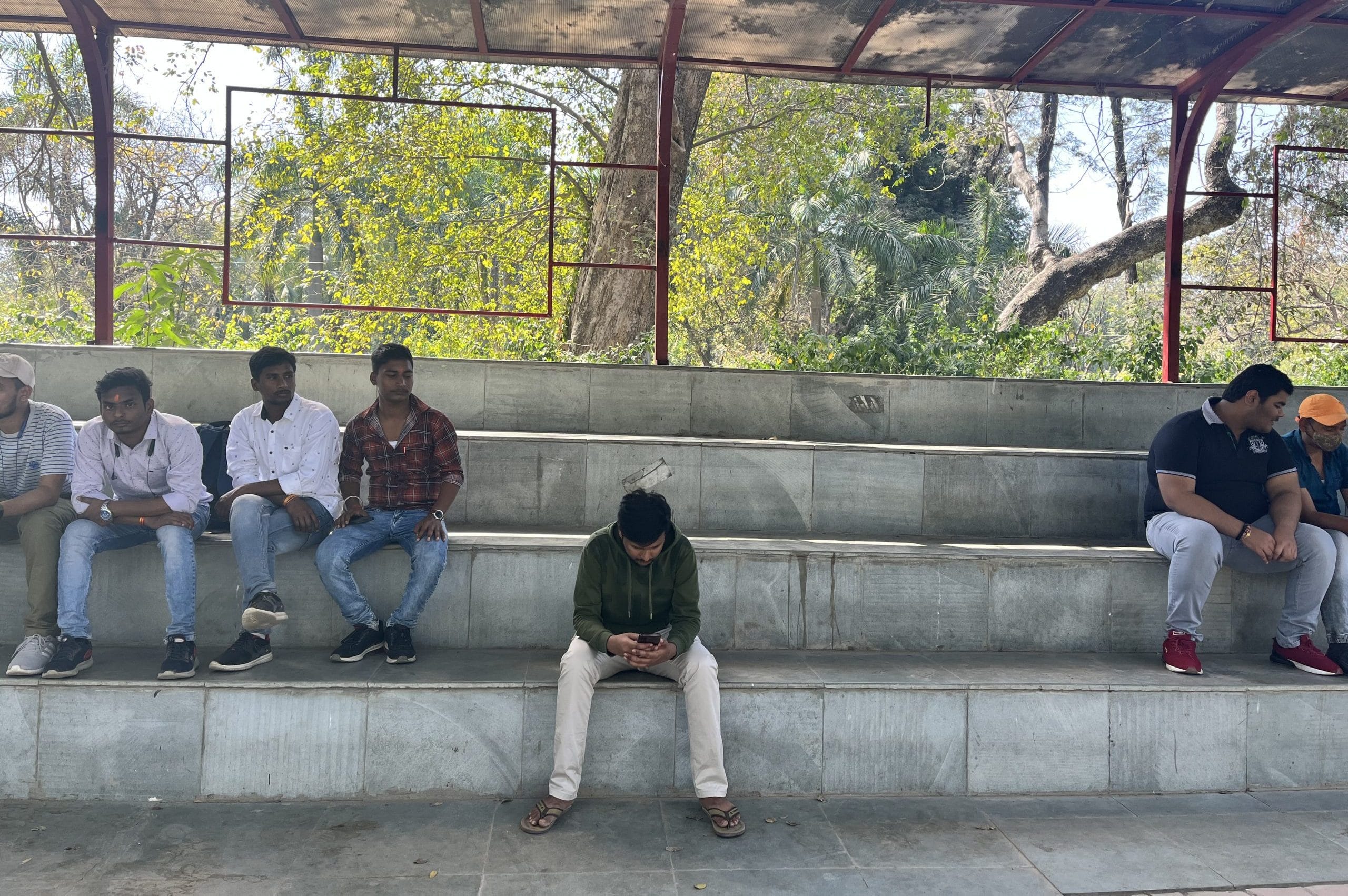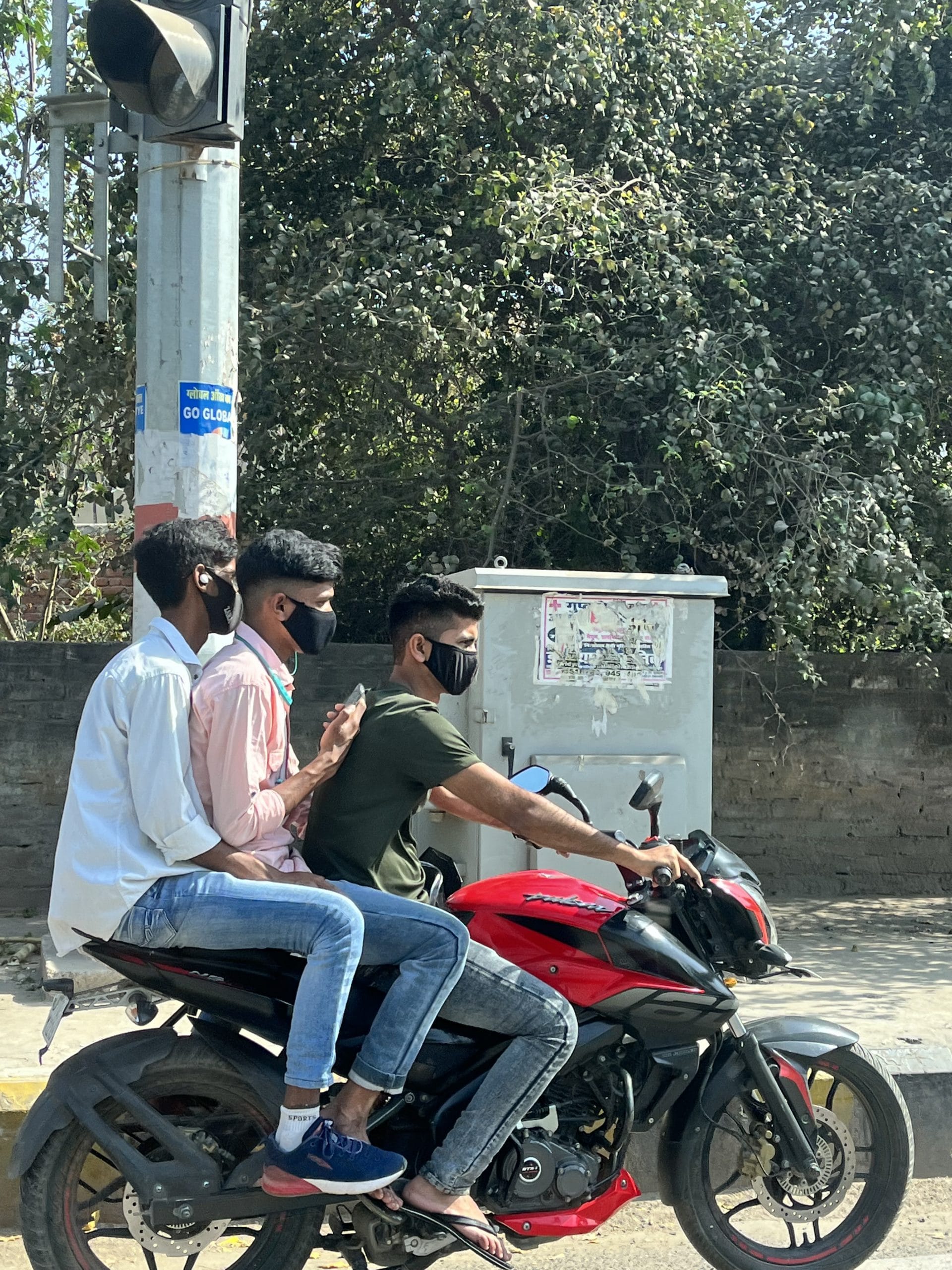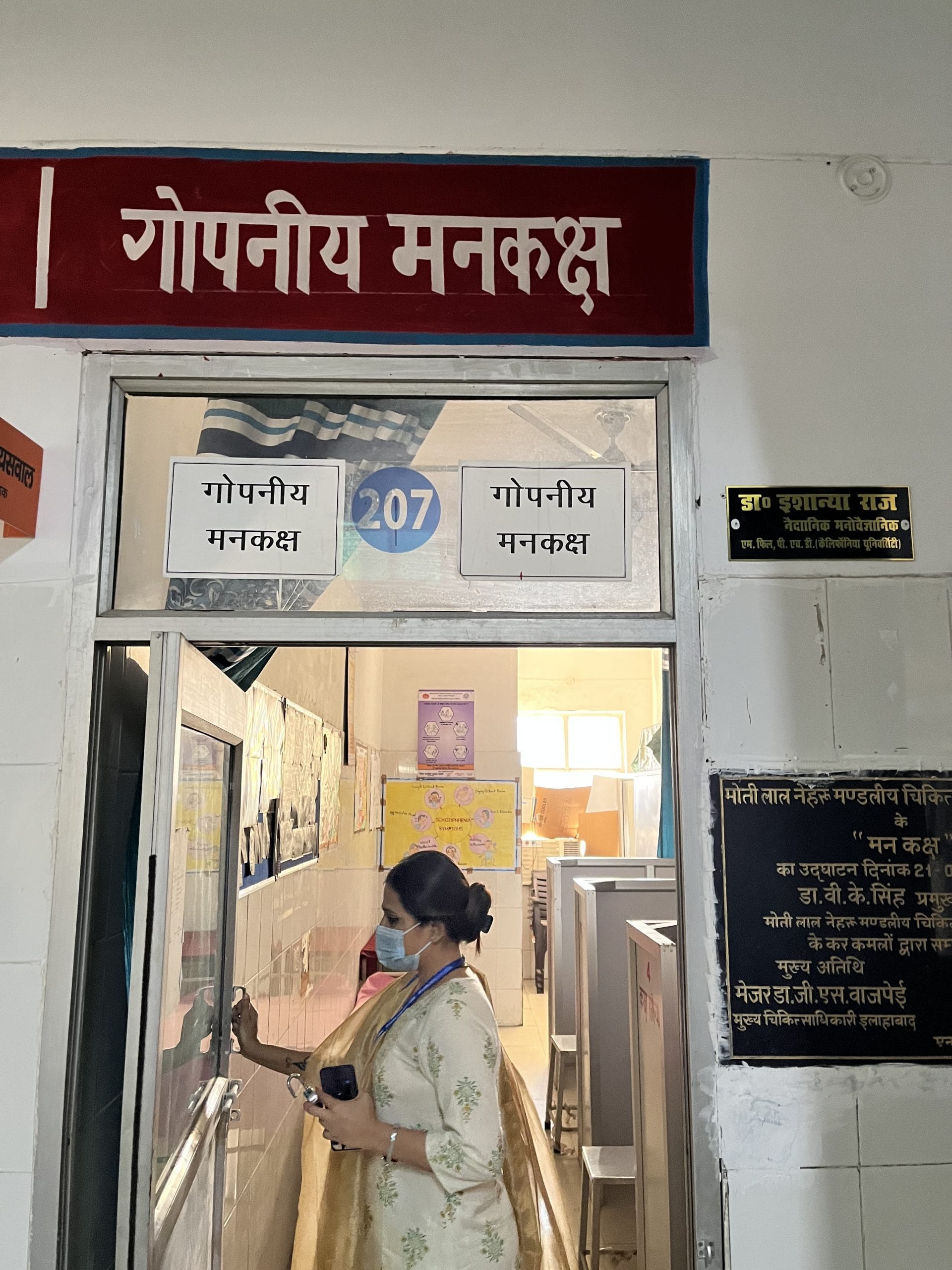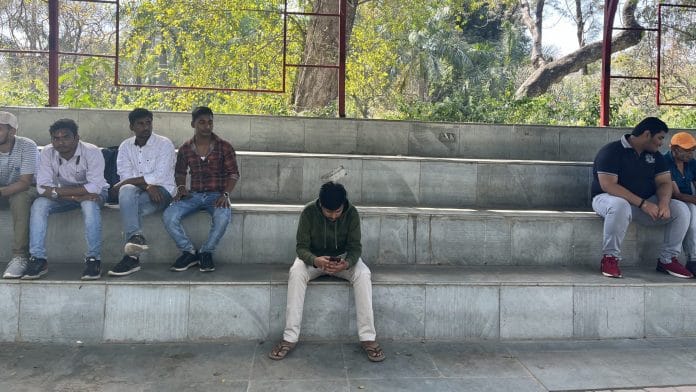Prayagraj: Everything seemed to be going well for Shaurya Pratap Chauhan. Among the brightest in his class, he scored 90% in his 10th board examination, in 2014. Then, for no apparent reason, his grades began to fall. In the 12th boards, he scored 75%. In spite of coaching from a well-known centre in Rajasthan’s Kota, he failed to clear the Joint Entrance Examination, or secure admission to an Indian Institute of Technology. He then studied math at Allahabad University and barely managed to graduate, but says he can’t solve a single math question now.
For years, Chauhan blamed a broken romantic relationship for his problems. Like many others, his parents blamed bad company, lack of focus, and the emotional problems young adults generally face. There was one thing no one considered: Chauhan’s most intimate, constant companion, his smartphone.
In the earlier story in its ‘Generation Nowhere’ series, ThePrint looked at the growing crisis of youth unemployment, the lack of opportunity for political or social agency, and the explosion in Internet usage. Smartphone addiction is one of the manifestations of this crisis.
Ever since 2019, a team led by Dr Rakesh Paswan and Dr Ishanyaraj of the National Mental Health Programme have been battling an epidemic that’s tearing apart the lives of many young Indians. At a centre in the Motilal Nehru Divisional Hospital in Uttar Pradesh’s Prayagraj district (formerly Allahabad), the doctors have set up a mobile de-addiction centre.
For some young people, it’s their only hope.
Also read: Unemployment and unlimited data pack — UP’s youth are neither angry nor idle
The world of smartphone addicts
Experts have long recognised the existence of what is called behavioural addiction. While those addicted to drugs become dependent on a substance, behavioural addicts—gamblers and kleptomaniacs, for example—get comfort and pleasure from performing an act. The clinical literature on smartphone addiction in India is thin, but one study found high levels of dependency among young men. Another 2014 paper pointed to multiple health impacts of smartphone dependency among young people.
Like many, Chauhan’s phone use exploded when he graduated from a simple smartphone to a touchscreen. He began to spend more than twelve hours a day on phone calls, WhatsApp, two Facebook accounts (from which he would “log in and log out around 400 times a day”) and YouTube. “I would lie the whole day on a charpai, doing nothing except using my phone,” he said in a conversation with me.

The story isn’t unusual. “In one case,” Dr Ishanyaraj says, “a parent came to us concerned about their sons, who were in the 11th and 12th standards. One of the boys had flatly refused to sit for his examinations. They became violent when the parents tried to take away their phones. That experience eventually led us to set up the smartphone de-addiction centre.”
Chauhan’s story isn’t exceptional. His friend Akash Jaiswal, from a rural background, dropped out of college because of his addiction to playing the video game, PUBG. “He said that he will look after his father’s grocery shop,” Chauhan recalls, “and get a correspondence degree.”
Sonu Kumar, 24-year-old student of Allahabad University, saw viewed his father’s WhatsApp status at midnight and immediately got a call from him. “Humko laga tha ki daatenge ki raat ke 12 baje bhi phone se chipke hue ho,” Kumar said, speaking of the far of getting scolded by his father. But he was surprised to see his father beaming with joy and telling him that he was the first person to have seen his latest WhatsApp status, a clear sign of the smartphone addiction having transcended age gaps.
It isn’t that young people are unaware of the dangers. Samarjeet Yadav, a 23-year-old preparing for the Staff Selection Commission (SSC) examination, has deleted all the social media apps from his phone.
“I would ask my mom for a cup of tea,” he says, “and then get distracted by my phone, jumping from one app to the other. Then, I would realise the tea had got cold, so I would ask her to warm it up for me. Then, the same thing would happen again, and again, and again.”
Satyam Shukla, another competitive exam aspirant, has stopped charging his phone, hoping it would reduce the usage time. Abhishek Kumar went a step ahead and recently broke his phone—fed up, he says, of endlessly Googling “how to get rid of mobile addiction.”
Also read: Studies show joblessness leads to yearning for strong-armed leadership. Look at Gorakhpur
The looming crisis
A group of three young men drove past the famous Subhash Chauraha in Prayagraj one summer afternoon last week. One of them was assigned to ride the Pulsar bike, while the one in the middle watched Instagram reels, and the third listened to music. “We have a rota system to drive the bike,” one of them explained. “The fight isn’t over who drives, it’s over who gets to sit at the back, so they can use their smartphones.”

Adolescents glued to their phones in public are becoming as much icons of small-town and rural India as farmers working in their fields. There is a story of a Prayagraj student who needed a companion to avoid bumping into lamp-posts or falling into drains, because he couldn’t take his eyes off his smartphone. The story might be anecdotal, but the message isn’t.
When research about addiction to smartphones first emerged a decade ago, few paid attention. As families began seeking help, though, mental health experts started responding. The first smartphone de-addiction centre in India was opened in Bengaluru in June 2014. Delhi followed soon after. A centre was set up in Pune in 2019, and then in three Uttar Pradesh districts. There is also one in Amritsar.
“Slowly, the mind-space, free time, and creativity of young people turns away from the real world,” says Dr Paswan, “and becomes trapped inside the smartphones.”
Treatment can help. Over the year, Chauhan has been on medication and his attention span has also increased. His screen-time, earlier more than 14 hours a day, has reduced to 7-8 hours now. There isn’t, however, any magic pill that can fix the problem. “We have registered more than 400 patients,” Dr Ishanyaraj notes, “but only 40% of them turned for follow-ups.”

Like all addictions, though, progress can be frustratingly slow, and relapse rates high, the clinical literature suggests. Every addiction, whether behavioural or substance abuse, is interwoven with complex emotional, personal and social factors. The resources to provide all young people in need with sustained mental health support just do not exist.
The doctors at the Prayagraj de-addiction centre believe the problem is going to get worse. According to a Deloitte study, India will emerge as the second-largest smartphone manufacturer and about one billion users by 2026, with rural areas driving the sale of internet-enabled phones.
Smartphone prices are steadily falling and their use becoming ubiquitous at everything — from online exams, seminars, entertainment, to even a Rs 20 payment at the local fruit-juice shop. The number of smartphone users are set to only grow. And with it, the number of addicts also, inexorably, will explode.






